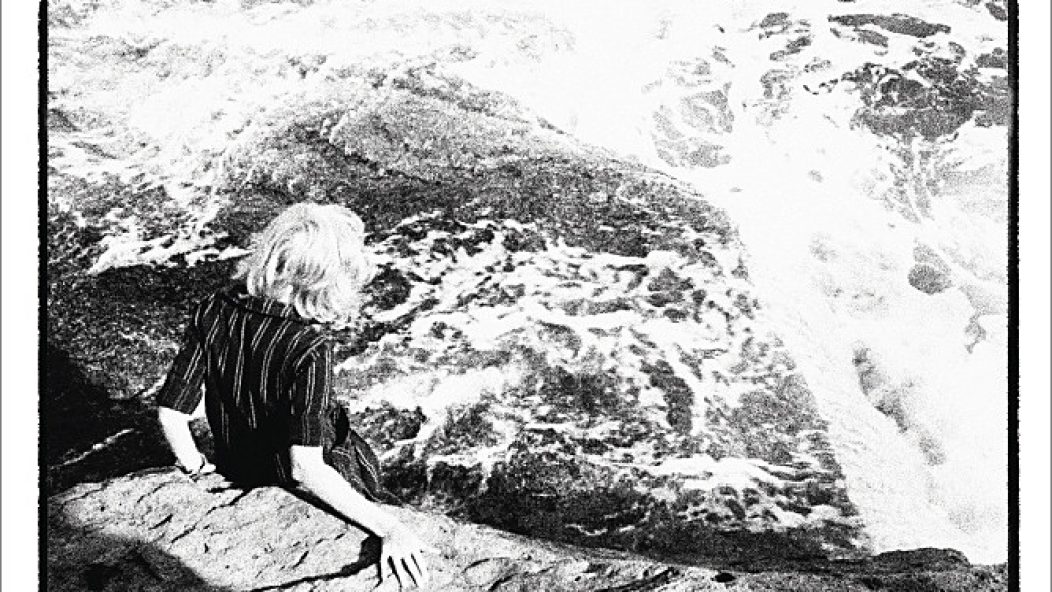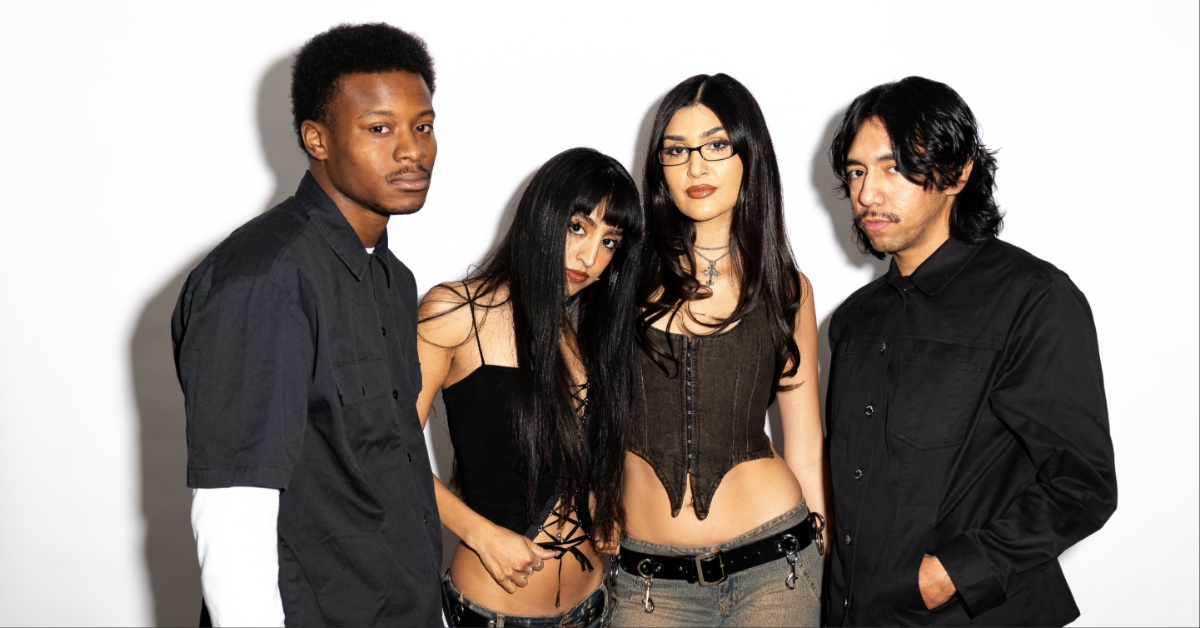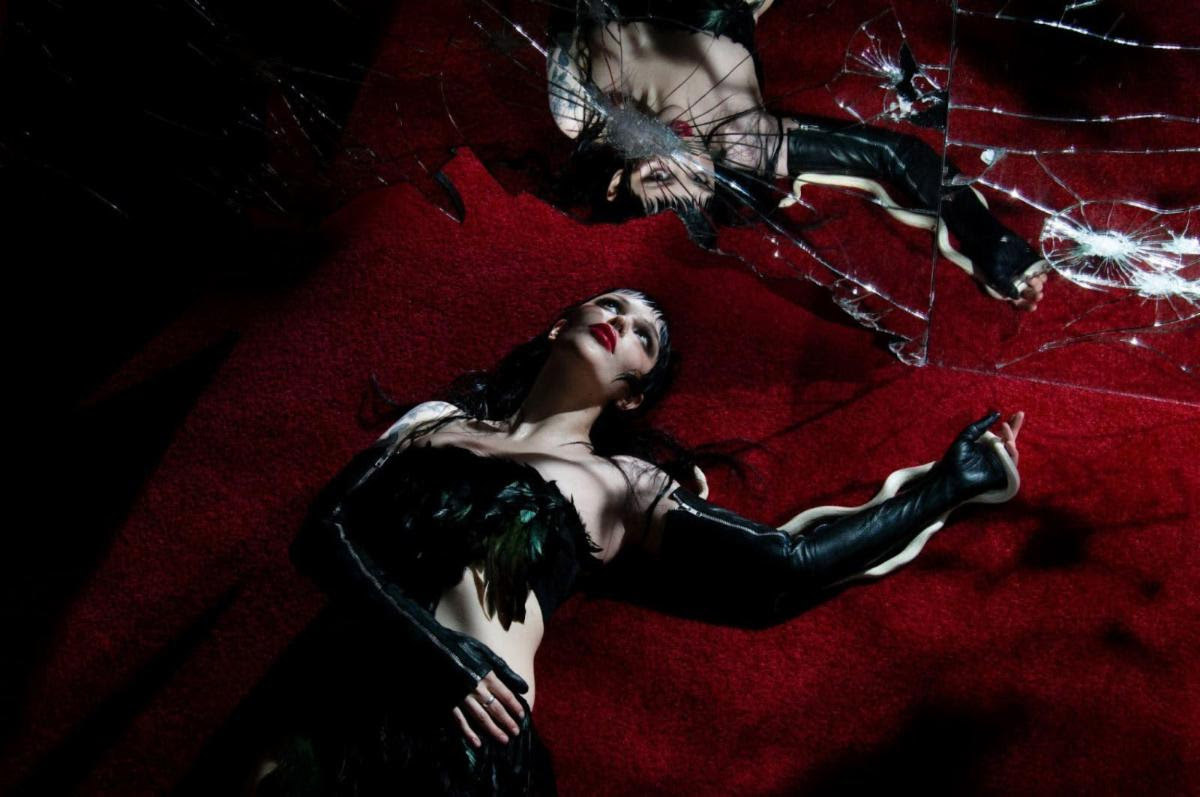
Emotional "Disaffection" on Nostalgist's New MLP

…
With a name like Nostalgist, the intent is more than clear. Much like the greater movement of “new post-punk,” multi-instrumentalist Asa Eisenhardt intends to capture the sounds of times long since past. Back when Creation Records and 4AD dominated airwaves and basement DJ sessions alike — the dance-infused affectations of gothic rock and art punk’s pop mindset bridged the impossible gap between darkness and light.
Nostalgist themselves operate in a similar type of monochrome, and the band’s debut MLP Disaffection treads the music noir philosophy with a practiced hand and emotional bearing. Primarily influenced by the structured dark pop stylings which dominated 1980s charts, Nostalgist’s ethereal sounds plod with a dub-infected swagger, magnified by drummer Aesop Dekker’s (Extremity, Khôrada, ex-Agalloch) heavy hand. However morose and downtrodden the music weaves, Disaffection carries a chiming character, a remnant of the dreampop and shoegaze styles which would eventually jettison from post-punk in the late 1980s and early 1990s. An homage to the epoch of newer styles pulling the mother gothic genre in different directions, Nostalgist moves beyond nostalgia and begins to feel more like the genuine time period rather than a simple emulation.
Disaffection is out Friday, March 30th, on vinyl and digital formats directly from Nostalgist themselves. Listen to the MLP in its entirety, featuring a particularly heavy rendition of Catherine Wheel’s “Texture,” and read an interview with Asa Eisenhardt below.
…
…

…
The Asa Eisenhardt I remember from almost ten years ago was a progressive rock and metal encyclopaedia — a complete 180 from the post-punk master of 2018. Looking back, what initially drew you to post-punk and shoegaze?
Your description is a bit generous, I’d hardly say I’m the master of anything. I am, however, definitely someone voracious for information on whatever subject matter I’m interested in. Shoegaze entered my life with Loveless, as it did for many, I imagine. Siamese Dream was and is a huge musical influence/touchstone for me, so when a friend played “Sometimes” in a class presentation during our first few weeks of college, the audible corollary between the two albums had me hooked. What I loved was that although there’s some general similarity in guitar tone, the band’s vocal androgyny and sensual vibe was so radically different, so much less “rock” than that of Billy Corgan, but still loud and huge. Loveless became the soundtrack to my first relationship. From 2007-2011, I couldn’t get enough shoegaze. Safe to say I wore myself out, especially of the My Bloody Valentine glide guitar sound.
Thanks to The Crow Soundtrack and some burned CDs from my cousin, I definitely became a Cure fan as a teenager–“Burn” was one of the first basslines I learned–but overall only really got into post-punk after college, I must confess. I have memories of downloading the original version of Joy Division’s “Dead Souls” after hearing the Nine Inch Nails cover and being genuinely, totally unnerved by the bleakness of Ian Curtis’ voice.
It sounds incredibly stupid to write now, but I also think my early love of classic rock and metal, followed by shoegaze, made me impatient when a band’s guitars weren’t huge-sounding. Seeing this video of Vaura’s first show that piqued my interest into the non-metal side of what the band was mixing into their sound. One of the first recommendations I got from a much older, wiser friend was Lowlife, and they remain one of my single most foundational influences.
Admittedly, they mostly did one thing, but damn did they do it well– brooding 6/8 trudges with double-tracked chordal/lead bass and a singularly gorgeous, melancholic baritone. To answer your question properly, I think it was once again the emotional aspect that ultimately made post-punk so relatable. I love metal, but frequently I find romanticized lyrics about the mundane– namely love– the most personally resonant. As in, say, “Colours Blue“. Rest in Power, Craig Lorentson.
From there, it was headlong into all manner of other classics – The Chameleons’ Script of the Bridge, The Comsat Angels’ Sleep No More, For Against’s entire catalog, most of Killing Joke’s ’80s output, Modern Eon’s Fiction Tales, Fields of the Nephilim’s first three records, and early on, The Sisters of Mercy’s First and Last and Always.
Though you are open about your favorites and wear their influence on your sleeve, the upcoming Nostalgist record, Disaffection, works around the standard route of rote emulation, something which (at least in my opinion) plagues the modern post-punk approach. How did you approach creating this album so as to avoid this new stylistic crutch?
Thank you, that’s humbling of you to say. I have zero delusions of being innovative, but my hope is that our music blends the obvious influences in a way that’s just distinct enough. I don’t disagree with you regarding straight-up rehashing, but really that’s inevitable in any sort of genre or trend, right? Frequently, creatives begin by copying their heroes, and I’m no different– the bedroom demo version of “Illusory,” was this super-rough demo that was just a bad My Bloody Valentine aping (and, some might say, the final 7″ EP version was too).
Eventually, I think the desire to mix all the influences just happened naturally, because I don’t want to solely emulate, say, just Slowdive-y/Kitchens of Distinction airiness or just heavy riffs or just dubby basslines. I wanted to draw from all of these sorts of traits and mix them in a coherent, memorable arrangement. There’s inevitably going to be exceptions, but generally I make it a point to not settle for a song with only one influence. I’m incredibly picky about individual parts I come up with, as well– anything overly derivative gets abandoned fast.
I also have to credit Evan Foster, my producer, engineer and mentor. He was hard on me right from the get-go about my contrived vocal proclivities when we were tracking Of Loves and Days Ago. At the time, I was fixated on forcing baritone to sound like Craig Lorentson, but came off like a super-crummy Andrew Eldritch impersonator. I’m not a great singer by any stretch, so as I was writing the melodies for this record I was careful to keep my limited range in mind and really think about how to effectively portray the emotions of the lyrics with the most tangible conviction I could muster. Nowadays that forced-baritone, very stereotypical sort of post-punk/goth vocal melodrama is more of an occasional device for emphasis.
Though you are particular about what you write, most modern shoegaze and post-punk bands are not and go for full emulation. Why do you think this sort of creative attitude is still so deeply in the grip of shoegaze and post-punks champions?
As far as shoegaze, I’d theorize it’s because the sounds of the original-era big names are so accessibly gratifying in a different way than more traditional rock styles. In some combination, these bands were/are hooky without being trite, loud without being outrightly metal, noisy without being abrasive, and, broadly speaking, incredibly sensual and emotive. Songs like “Souvlaki Space Station,” “Sometimes,” “Dreams Burn Down,” or “Never Lose That Feeling” aren’t identical, but are all drenched in guitar effects and seem to resonate with a very human sense of desire.
And as such, for many fledgling musicians interested, therein comes the gear wormhole and thusly sonic demystification via the internet. I was in preschool when Loveless came out in 1991, and can only imagine how musicians would have been enthralled at and then investigated that guitar sound at the time. In 2006, learning about Kevin Shields’ use of altered tunings, taped tremolo bars, and Alesis and Yamaha rack reverbs was a Google search away. Given that Nevermind dropped a few months before Loveless, I’d wager any indie/alternative coverage in guitar magazines at the time of its release would’ve been Seattle-centric.
Without question, it’s quite fun to channel one’s emotions while recreating, say, that OG attack-less Slowdive Yamaha FX-500 wash, or the melted My Bloody Valentine glide-guitar technique. Today, you can approximate such things with a few free plugins and/or the ever-expanding world of guitar pedals (I speak from experience here). Either way, it seems to me a very slippery slope– the allure of beautiful sounds really easily distracts from and can completely override, y’know, writing songs (I definitely speak from experience here).
I’m even less qualified to speak on post-punk, I’d say. My first thought is that the bleakness of much of the classic UK stuff is mega-prominent and for some, highly relatable. On top of that–and I write this without judgment–the bar for entry to recreate many of the stylistic sonic hallmarks, ie. Ian Curtis vocals, minimal drums and/or chorus-drenched bass, isn’t high whatsoever. To get those sounds, as opposed to that of My Bloody Valentine and the like, you don’t need to research or spend much whatsoever.
Did you find any challenges in trying to balance the use of the aforementioned “shoegaze” sounds while still maintaining the concrete songwriting base?
Not really, although that’s largely because of lessons learned while doing pre-production for Of Loves and Days Ago a few years back. At that time, I was constantly running way too much reverb, it made everything I played incoherent. A few years ago I redid my pedalboard and structured it around a relay switcher. Of the six pedals I use, the only time there’s more than two or three on is when I’m soloing. And if I’m playing chords and using distortion, I’m not running any other effects — I want those riffs to cut through!
Generally, I almost never use effects while writing, though. They definitely inspire me sometimes, but aren’t usually a starting point. I’m really hard on myself as far as coming up with stuff I really like first while at home, then trying them out through my effects at the practice space. I also don’t use a tremolo bar whatsoever.
There is a heavier, more rhythmic energy to Disaffection when placed side by side with its predecessor Of Loves and Days Ago. Were there any specific inspirations or catalysts behind this substantial rhythm section presence?
The dub influences present in bands like the Comsat Angels, Chameleons and Killing Joke would be primary factors in that regard– I love dub grooves, especially when their hypnotic power can be channeled in dark musical contexts. The verse bassline to “Smoldering Amber”, for instance, takes 100% of its DNA from songs like “Our Secret” and “Here Today“. I’ve only gotten more into dub itself since recording Disaffection and it’s safe to say that influence will only be more present in the future. A generally good, hypnotic, dark bass/drum groove underpinning a dreamy or more minimal guitar part or vocal not only works great mechanically, it also provides an even greater contrast to heavier song sections, where I usually prefer the bass to lock with the riff.
What do you hope people take from this album as opposed to the full-length and EP which preceded it?
This is such a typical answer, but it’s the honest one: I want people to take whatever they want from any of my output, period. The songs have their own personal meanings for me, but if someone else finds their own respective interpretation and thusly resonance, that’s straight-up wonderful. The ideal, really. One of the most beautiful things about art, I think, is how we can project ourselves onto it or filter/ frame/reflect upon our own experiences through it.
Now that this MLP has been unleashed, what comes next?
First and foremost, we need to find a full-time bass player. Alex and I are quite picky– it’s of utmost importance to us to ensure any future members have the best possible personal and musical compatibility.
We already have summer shows lined up. I’d also love to do a fly-in East Coast tour. A remix release is likely at some point, it’ll be a completely reinterpreted presentation of a certain Disaffection song by two different artists we hold in high regard.
I have a reasonable stack of riffs and parts for the next record that I intend to cultivate. That’ll be a long way off, and I’m not ruling out, say, split records in the time between, but otherwise I very much intend to craft a properly baroque second album. 40-45 minutes, 8-10 songs, some tasteful additions of new influences here and there, but ultimately just a further, finer refinement of our sound and aesthetic.
…











